North Auckland > Public Hospital Services > Health New Zealand | Te Whatu Ora - Waitematā >
General Surgery Services | Waitematā
Public Service, General Surgery, Bariatric (Weight Loss) Surgery
Description
District Health Board (WDHB) area are sent to the vascular service at Auckland City Hospital.
Consultants
-

Mr Michael Booth
General, Upper GI, Biliary, and Morbid Obesity Surgeon
-
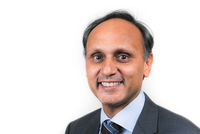
Mr Ashwin Chunilal
Visiting Plastic Surgeon (Breast Service)
-
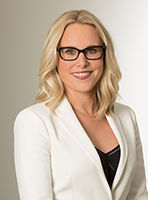
Dr Katherine Gale
General, Skin and Oncoplastic Breast Surgeon
-

Dr Susan Gerred
General and Breast Surgeon
-

Mr Richard Harman
General, Breast, and Endocrine Surgeon
-

Mr Andrew Herd
General and Colorectal Surgeon
-

Ms Sarah Hulme
Visiting Plastic Surgeon (Breast Service)
-

Mr Mike Hulme-Moir
General and Colorectal Surgeon
-

Mr John Jarvis
General and Colorectal Surgeon
-

Dr Eva Juhasz
General, Breast, and Colorectal Surgeon
-

Mr John Kenealy
Visiting Plastic Surgeon (Breast Service)
-

Mr Jonathan Koea
General, Hepatobiliary and Upper GI Surgeon
-
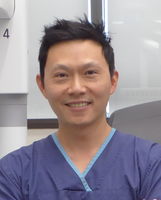
Mr Universe Leung
General, Hepatobiliary, and Upper GI Surgeon
-
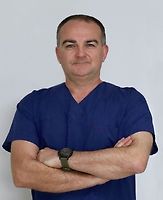
Mr Richard Martin
General Surgeon
-

Mr Andrew Moot
General and Colorectal Surgeon
-

Mr Siraj Rajaratnam
General and Colorectal Surgeon
-

Mr Jason Robertson
Upper GI, Bariatric and General Surgeon
-

Mr Michael Rodgers
Clinical Director. General, Hepatobiliary and Upper GI Surgeon
-
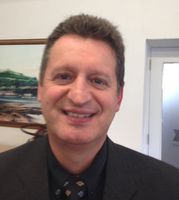
Mr Peter Shapkov
General and Breast Surgeon
-

Mr Sanket (Sunny) Srinivasa
Upper GI, HPB Surgeon
-
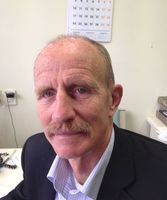
Mr Ian Stewart
General and Colorectal Surgeon
Referral Expectations
Acute Referrals
When you come to your clinic appointment please bring any relevant x-rays, scans, or results with you. Your surgeon will ask questions about your illness and examine you to try to determine or confirm the diagnosis. This process may also require a number of tests (e.g. blood tests, x-rays, scans etc). Sometimes this can all be done during one visit, but for some conditions this will take several follow-up appointments. Occasionally some tests are arranged even before your appointment to try to speed up the process.
Common Conditions / Procedures / Treatments
Obesity is one of the main causes of poor health. Morbid obesity is a term that is used when weight has becomes such a problem it severely affects a person’s health. Individuals are considered morbidly obese if their Body Mass Index (BMI) is 40 or higher and severely obese if the BMI is between 35 to 39. Surgery is increasingly recognised as an effective treatment for those who are severely or morbidly obese and have been unable to lose weight and keep it off. It can be called bariatric, obesity, metabolic or weight loss surgery and it refers to operations designed to help reduce a person’s weight and improve their health. The operations result in either restricting the amount of food people are able to eat, absorb or both. Surgery is not for everyone and it involves not just a degree of risk but a commitment to a permanent lifestyle change. See the ‘for more information’ section below for further details about the surgery. Who can have bariatric surgery? Auckland and Waitematā District Health Board will consider people for surgery if they: Have a BMI of 40 or more Have a BMI of 35 or higher and have other obesity-related severe diseases that could be improved such as heart disease, type 2 diabetes or obstructive sleep apnoea Have previously failed attempts to lose weight Understand what the surgery involves, what to expect before and afterwards and are committed to a permanent lifestyle change (diet and exercise) Follow this link to calculate your BMI If an individual considering the surgery smokes, they are encouraged to quit prior to surgery. Assistance is available through: Quitline Auckland & Waitematā DHB Smoke Free Service At Waitematā DHB, people who wish to be considered for surgery must be drug free and smoke free for at least 6 months prior to their doctor referring them for surgery. Your doctor will need to refer you for surgery and then the hospital will confirm if you will be considered for surgery or not as even though you may meet the criteria, bariatric surgery is provided through the DHBs for only a relatively small number of people each year. Patients are prioritised using a tool provided by the Ministry of Health to identify who would benefit most from the surgery. What can be achieved with bariatric surgery? Bariatric surgery may help to reduce excess weight but it is not an easy option or a quick fix. The surgery can help to prevent diseases that being obese can cause and can add years to the life of the patient. However, it takes hard work and lifelong changes to eating and physical activity to achieve and maintain weight loss. Surgery itself also carries a risk of complications or problems. These risks need to be balanced against the benefits that surgery can bring in improving the quality of life. What are the steps in the process? Referral Referred to the District Health Board (DHB) Considered against the Ministry of Health prioritisation tool and the DHB criteria Invited to patient information seminar Acceptance into the programme Preparing for Surgery Full patient assessment Consultations with specialists Pre-surgery lifestyle changes goal setting Surgery Type of surgery confirmed Surgery date confirmed Prescribed weight loss programme prior to surgery Following Surgery Follow-up appointments with specialists Monitoring of lifestyle changes Support from friends and family For more information Talk with your doctor to discuss your options and if you wish to be referred for bariatric surgery. Go to Health Navigator for more information and links to further details. If you would like support from our Māori or Pacific health teams contact us at: Māori Health Services - He Kamaka Waiora Phone 09 486 8324 ext 3553 Monday to Friday 8am – 5pm Pacific Health Tautai Fakataha Service Hours Monday to Friday 8am – 4.30pm Contact our support team Tautai Fakataha Waitematā DHB Duty Phone: 021 726 076 Tautai Fakataha Auckland DHB Duty Phone: 021 725 932 After Hours urgent inquiry 09 486 8920, ask for Pacific Health ‘inpatient on call’
Obesity is one of the main causes of poor health. Morbid obesity is a term that is used when weight has becomes such a problem it severely affects a person’s health. Individuals are considered morbidly obese if their Body Mass Index (BMI) is 40 or higher and severely obese if the BMI is between 35 to 39. Surgery is increasingly recognised as an effective treatment for those who are severely or morbidly obese and have been unable to lose weight and keep it off. It can be called bariatric, obesity, metabolic or weight loss surgery and it refers to operations designed to help reduce a person’s weight and improve their health. The operations result in either restricting the amount of food people are able to eat, absorb or both. Surgery is not for everyone and it involves not just a degree of risk but a commitment to a permanent lifestyle change. See the ‘for more information’ section below for further details about the surgery. Who can have bariatric surgery? Auckland and Waitematā District Health Board will consider people for surgery if they: Have a BMI of 40 or more Have a BMI of 35 or higher and have other obesity-related severe diseases that could be improved such as heart disease, type 2 diabetes or obstructive sleep apnoea Have previously failed attempts to lose weight Understand what the surgery involves, what to expect before and afterwards and are committed to a permanent lifestyle change (diet and exercise) Follow this link to calculate your BMI If an individual considering the surgery smokes, they are encouraged to quit prior to surgery. Assistance is available through: Quitline Auckland & Waitematā DHB Smoke Free Service At Waitematā DHB, people who wish to be considered for surgery must be drug free and smoke free for at least 6 months prior to their doctor referring them for surgery. Your doctor will need to refer you for surgery and then the hospital will confirm if you will be considered for surgery or not as even though you may meet the criteria, bariatric surgery is provided through the DHBs for only a relatively small number of people each year. Patients are prioritised using a tool provided by the Ministry of Health to identify who would benefit most from the surgery. What can be achieved with bariatric surgery? Bariatric surgery may help to reduce excess weight but it is not an easy option or a quick fix. The surgery can help to prevent diseases that being obese can cause and can add years to the life of the patient. However, it takes hard work and lifelong changes to eating and physical activity to achieve and maintain weight loss. Surgery itself also carries a risk of complications or problems. These risks need to be balanced against the benefits that surgery can bring in improving the quality of life. What are the steps in the process? Referral Referred to the District Health Board (DHB) Considered against the Ministry of Health prioritisation tool and the DHB criteria Invited to patient information seminar Acceptance into the programme Preparing for Surgery Full patient assessment Consultations with specialists Pre-surgery lifestyle changes goal setting Surgery Type of surgery confirmed Surgery date confirmed Prescribed weight loss programme prior to surgery Following Surgery Follow-up appointments with specialists Monitoring of lifestyle changes Support from friends and family For more information Talk with your doctor to discuss your options and if you wish to be referred for bariatric surgery. Go to Health Navigator for more information and links to further details. If you would like support from our Māori or Pacific health teams contact us at: Māori Health Services - He Kamaka Waiora Phone 09 486 8324 ext 3553 Monday to Friday 8am – 5pm Pacific Health Tautai Fakataha Service Hours Monday to Friday 8am – 4.30pm Contact our support team Tautai Fakataha Waitematā DHB Duty Phone: 021 726 076 Tautai Fakataha Auckland DHB Duty Phone: 021 725 932 After Hours urgent inquiry 09 486 8920, ask for Pacific Health ‘inpatient on call’
Obesity is one of the main causes of poor health. Morbid obesity is a term that is used when weight has becomes such a problem it severely affects a person’s health. Individuals are considered morbidly obese if their Body Mass Index (BMI) is 40 or higher and severely obese if the BMI is between 35 to 39.
Surgery is increasingly recognised as an effective treatment for those who are severely or morbidly obese and have been unable to lose weight and keep it off. It can be called bariatric, obesity, metabolic or weight loss surgery and it refers to operations designed to help reduce a person’s weight and improve their health.
The operations result in either restricting the amount of food people are able to eat, absorb or both. Surgery is not for everyone and it involves not just a degree of risk but a commitment to a permanent lifestyle change. See the ‘for more information’ section below for further details about the surgery.
Who can have bariatric surgery?
Auckland and Waitematā District Health Board will consider people for surgery if they:
- Have a BMI of 40 or more
- Have a BMI of 35 or higher and have other obesity-related severe diseases that could be improved such as heart disease, type 2 diabetes or obstructive sleep apnoea
- Have previously failed attempts to lose weight
- Understand what the surgery involves, what to expect before and afterwards and are committed to a permanent lifestyle change (diet and exercise)
Follow this link to calculate your BMI
If an individual considering the surgery smokes, they are encouraged to quit prior to surgery. Assistance is available through:
At Waitematā DHB, people who wish to be considered for surgery must be drug free and smoke free for at least 6 months prior to their doctor referring them for surgery.
Your doctor will need to refer you for surgery and then the hospital will confirm if you will be considered for surgery or not as even though you may meet the criteria, bariatric surgery is provided through the DHBs for only a relatively small number of people each year. Patients are prioritised using a tool provided by the Ministry of Health to identify who would benefit most from the surgery.
What can be achieved with bariatric surgery?
Bariatric surgery may help to reduce excess weight but it is not an easy option or a quick fix. The surgery can help to prevent diseases that being obese can cause and can add years to the life of the patient. However, it takes hard work and lifelong changes to eating and physical activity to achieve and maintain weight loss.
Surgery itself also carries a risk of complications or problems. These risks need to be balanced against the benefits that surgery can bring in improving the quality of life.
What are the steps in the process?
| Referral |
|
| Preparing for Surgery |
|
| Surgery |
|
| Following Surgery |
|
For more information
Talk with your doctor to discuss your options and if you wish to be referred for bariatric surgery.
Go to Health Navigator for more information and links to further details.
If you would like support from our Māori or Pacific health teams contact us at:
Māori Health Services - He Kamaka Waiora
Phone 09 486 8324 ext 3553
Monday to Friday 8am – 5pm
Pacific Health Tautai Fakataha
Service Hours
Monday to Friday 8am – 4.30pm
Contact our support team
Tautai Fakataha Waitematā DHB Duty Phone: 021 726 076
Tautai Fakataha Auckland DHB Duty Phone: 021 725 932
After Hours urgent inquiry
09 486 8920, ask for Pacific Health ‘inpatient on call’
Skin conditions dealt with by general surgery include lumps, tumours and other lesions of the skin and underlying tissues. These are often fairly simple conditions that can be dealt with by performing minor operations under local anaesthetic (the area of skin being treated is numbed). Often these procedures are performed as outpatient or day case procedures. A photograph of a skin lesion is required for your referral, and a biopsy may also be required.
Skin conditions dealt with by general surgery include lumps, tumours and other lesions of the skin and underlying tissues. These are often fairly simple conditions that can be dealt with by performing minor operations under local anaesthetic (the area of skin being treated is numbed). Often these procedures are performed as outpatient or day case procedures. A photograph of a skin lesion is required for your referral, and a biopsy may also be required.
Skin conditions dealt with by general surgery include lumps, tumours and other lesions of the skin and underlying tissues. These are often fairly simple conditions that can be dealt with by performing minor operations under local anaesthetic (the area of skin being treated is numbed). Often these procedures are performed as outpatient or day case procedures.
A photograph of a skin lesion is required for your referral, and a biopsy may also be required.
Abnormalities of the endocrine system treated by general surgery include disorders of the pancreas and adrenal glands in the abdomen and the thyroid and parathyroid glands in the neck. These are often very complex conditions requiring extensive investigations. If surgery is required it is often quite complicated and will usually mean a stay in hospital for several days or even longer.
Abnormalities of the endocrine system treated by general surgery include disorders of the pancreas and adrenal glands in the abdomen and the thyroid and parathyroid glands in the neck. These are often very complex conditions requiring extensive investigations. If surgery is required it is often quite complicated and will usually mean a stay in hospital for several days or even longer.
Abnormalities of the endocrine system treated by general surgery include disorders of the pancreas and adrenal glands in the abdomen and the thyroid and parathyroid glands in the neck. These are often very complex conditions requiring extensive investigations. If surgery is required it is often quite complicated and will usually mean a stay in hospital for several days or even longer.
Conditions of the gut dealt with by general surgery include disorders of the oesophagus, stomach, small bowel, large bowel and anus. These range from complex conditions such as ulceration or cancer in the bowel through to fairly minor conditions such as haemorrhoids. Many of the more major conditions such as bowel cancer will require surgery, or sometimes treatment with medication, chemotherapy or radiotherapy. Haemorrhoids are a condition where the veins under the lining of the anus are congested and enlarged. Less severe haemorrhoids can be managed with simple treatments such as injection or banding which can be performed in the clinic while larger ones will require surgery.
Conditions of the gut dealt with by general surgery include disorders of the oesophagus, stomach, small bowel, large bowel and anus. These range from complex conditions such as ulceration or cancer in the bowel through to fairly minor conditions such as haemorrhoids. Many of the more major conditions such as bowel cancer will require surgery, or sometimes treatment with medication, chemotherapy or radiotherapy. Haemorrhoids are a condition where the veins under the lining of the anus are congested and enlarged. Less severe haemorrhoids can be managed with simple treatments such as injection or banding which can be performed in the clinic while larger ones will require surgery.
Conditions of the gut dealt with by general surgery include disorders of the oesophagus, stomach, small bowel, large bowel and anus. These range from complex conditions such as ulceration or cancer in the bowel through to fairly minor conditions such as haemorrhoids. Many of the more major conditions such as bowel cancer will require surgery, or sometimes treatment with medication, chemotherapy or radiotherapy.
Disorders of the salivary glands may be dealt with by the general surgical department or the ENT (ORL) department depending on the local policy.
Disorders of the salivary glands may be dealt with by the general surgical department or the ENT (ORL) department depending on the local policy.
Disorders of the salivary glands may be dealt with by the general surgical department or the ENT (ORL) department depending on the local policy.
General surgery covers some disorders of the liver and biliary system. The most common of these is pain caused by gallstones. These are formed if the gallbladder is not working properly, and the standard treatment is to remove the gallbladder (cholecystectomy). This procedure is usually performed using a laparoscopic (keyhole) approach.
General surgery covers some disorders of the liver and biliary system. The most common of these is pain caused by gallstones. These are formed if the gallbladder is not working properly, and the standard treatment is to remove the gallbladder (cholecystectomy). This procedure is usually performed using a laparoscopic (keyhole) approach.
General surgery covers some disorders of the liver and biliary system. The most common of these is pain caused by gallstones. These are formed if the gallbladder is not working properly, and the standard treatment is to remove the gallbladder (cholecystectomy). This procedure is usually performed using a laparoscopic (keyhole) approach.
A hernia exists where part of the abdominal wall is weakened, and the contents of the abdomen push through to the outside. This is most commonly seen in the groin area but can occur in other places. Surgical treatment is usually quite straightforward and involves returning the abdominal contents to the inside and then reinforcing the abdominal wall in some way. Waitematā District Health Board (DHB) Patient Information Video for Hernia Repair It is important to ensure you have the support of family and friends and so we encourage you to watch this video presentation with them. By now you will have been in for a specialist assessment at either our Elective Surgery Centre or North Shore Hospital and your surgeon has confirmed your need for surgery. You can assist in the success of your operation and recovery by being well prepared. Most of our patients go home within 3-4 days depending on the type of procedure they have had so we encourage you to give your immediate rehabilitation period your very best shot. The success of your surgery depends greatly on you. Now is the time to start planning for your return home and post-operative rehabilitation. Click on this link to view the hernia repair video. To read an Explanation of Terms used in this video - click here. The New Zealand Association of General Surgeons has released a position statement on mesh use in hernia repair. Please see the download to view this. NZAGS mesh hernia repair (PDF, 64.5 KB)
A hernia exists where part of the abdominal wall is weakened, and the contents of the abdomen push through to the outside. This is most commonly seen in the groin area but can occur in other places. Surgical treatment is usually quite straightforward and involves returning the abdominal contents to the inside and then reinforcing the abdominal wall in some way. Waitematā District Health Board (DHB) Patient Information Video for Hernia Repair It is important to ensure you have the support of family and friends and so we encourage you to watch this video presentation with them. By now you will have been in for a specialist assessment at either our Elective Surgery Centre or North Shore Hospital and your surgeon has confirmed your need for surgery. You can assist in the success of your operation and recovery by being well prepared. Most of our patients go home within 3-4 days depending on the type of procedure they have had so we encourage you to give your immediate rehabilitation period your very best shot. The success of your surgery depends greatly on you. Now is the time to start planning for your return home and post-operative rehabilitation. Click on this link to view the hernia repair video. To read an Explanation of Terms used in this video - click here. The New Zealand Association of General Surgeons has released a position statement on mesh use in hernia repair. Please see the download to view this. NZAGS mesh hernia repair (PDF, 64.5 KB)
A hernia exists where part of the abdominal wall is weakened, and the contents of the abdomen push through to the outside. This is most commonly seen in the groin area but can occur in other places. Surgical treatment is usually quite straightforward and involves returning the abdominal contents to the inside and then reinforcing the abdominal wall in some way.
Waitematā District Health Board (DHB) Patient Information Video for Hernia Repair
It is important to ensure you have the support of family and friends and so we encourage you to watch this video presentation with them.
By now you will have been in for a specialist assessment at either our Elective Surgery Centre or North Shore Hospital and your surgeon has confirmed your need for surgery. You can assist in the success of your operation and recovery by being well prepared. Most of our patients go home within 3-4 days depending on the type of procedure they have had so we encourage you to give your immediate rehabilitation period your very best shot. The success of your surgery depends greatly on you. Now is the time to start planning for your return home and post-operative rehabilitation.
Click on this link to view the hernia repair video.
To read an Explanation of Terms used in this video - click here.
The New Zealand Association of General Surgeons has released a position statement on mesh use in hernia repair. Please see the download to view this.
- NZAGS mesh hernia repair (PDF, 64.5 KB)
Vascular (blood vessel) disorders treated by general surgery at WDHB include varicose veins. This occurs when veins in the legs and thighs become enlarged and twisted. This is often caused by the failure of the one-way valve system in the veins, in which case it can be treated surgically by removing the segments of veins containing the malfunctioning valves as well as those veins which are significantly dilated. All other vascular problems are dealt with by Auckland City Hospital.
Vascular (blood vessel) disorders treated by general surgery at WDHB include varicose veins. This occurs when veins in the legs and thighs become enlarged and twisted. This is often caused by the failure of the one-way valve system in the veins, in which case it can be treated surgically by removing the segments of veins containing the malfunctioning valves as well as those veins which are significantly dilated. All other vascular problems are dealt with by Auckland City Hospital.
Vascular (blood vessel) disorders treated by general surgery at WDHB include varicose veins. This occurs when veins in the legs and thighs become enlarged and twisted. This is often caused by the failure of the one-way valve system in the veins, in which case it can be treated surgically by removing the segments of veins containing the malfunctioning valves as well as those veins which are significantly dilated.
All other vascular problems are dealt with by Auckland City Hospital.
A mammogram is a special type of x-ray used only for the breast. Mammography can be used either to look for very early breast cancer in women without breast symptoms (screening) or to examine women who do have breast symptoms (diagnostic). What to expect? You will need to undress from the waist up. One of your breasts will be positioned between two plastic plates which will flatten the breast slightly. Most women find that this is a bit uncomfortable, but not painful. Generally two x-rays are taken of each breast. It is also useful to compare the results with earlier examinations and you should take any previous mammography results with you.
A mammogram is a special type of x-ray used only for the breast. Mammography can be used either to look for very early breast cancer in women without breast symptoms (screening) or to examine women who do have breast symptoms (diagnostic). What to expect? You will need to undress from the waist up. One of your breasts will be positioned between two plastic plates which will flatten the breast slightly. Most women find that this is a bit uncomfortable, but not painful. Generally two x-rays are taken of each breast. It is also useful to compare the results with earlier examinations and you should take any previous mammography results with you.
A mammogram is a special type of x-ray used only for the breast. Mammography can be used either to look for very early breast cancer in women without breast symptoms (screening) or to examine women who do have breast symptoms (diagnostic).
What to expect?
You will need to undress from the waist up. One of your breasts will be positioned between two plastic plates which will flatten the breast slightly. Most women find that this is a bit uncomfortable, but not painful. Generally two x-rays are taken of each breast. It is also useful to compare the results with earlier examinations and you should take any previous mammography results with you.
In ultrasound, a beam of sound at a very high frequency (that cannot be heard) is sent into the body from a small vibrating crystal in a hand-held scanner head. When the beam meets a surface between tissues of different density, echoes of the sound beam are sent back into the scanner head. The time between sending the sound and receiving the echo back is fed into a computer, which in turn creates an image that is projected on a television screen. Ultrasound is a very safe type of imaging; this is why it is so widely used during pregnancy. What to expect? After lying down, the area to be examined will be exposed. Generally a contact gel will be used between the scanner head and skin. The scanner head is then pressed against your skin and moved around and over the area to be examined. At the same time the internal images will appear onto a screen.
In ultrasound, a beam of sound at a very high frequency (that cannot be heard) is sent into the body from a small vibrating crystal in a hand-held scanner head. When the beam meets a surface between tissues of different density, echoes of the sound beam are sent back into the scanner head. The time between sending the sound and receiving the echo back is fed into a computer, which in turn creates an image that is projected on a television screen. Ultrasound is a very safe type of imaging; this is why it is so widely used during pregnancy. What to expect? After lying down, the area to be examined will be exposed. Generally a contact gel will be used between the scanner head and skin. The scanner head is then pressed against your skin and moved around and over the area to be examined. At the same time the internal images will appear onto a screen.
In ultrasound, a beam of sound at a very high frequency (that cannot be heard) is sent into the body from a small vibrating crystal in a hand-held scanner head. When the beam meets a surface between tissues of different density, echoes of the sound beam are sent back into the scanner head. The time between sending the sound and receiving the echo back is fed into a computer, which in turn creates an image that is projected on a television screen. Ultrasound is a very safe type of imaging; this is why it is so widely used during pregnancy.
What to expect?
After lying down, the area to be examined will be exposed. Generally a contact gel will be used between the scanner head and skin. The scanner head is then pressed against your skin and moved around and over the area to be examined. At the same time the internal images will appear onto a screen.
This procedure involves inserting a needle through your skin into the breast lump and removing a sample of tissue for examination.
This procedure involves inserting a needle through your skin into the breast lump and removing a sample of tissue for examination.
This procedure involves inserting a needle through your skin into the breast lump and removing a sample of tissue for examination.
Open Excisional: a small incision (cut) is made as close as possible to the lump and the lump, together with a surrounding margin of tissue, is removed for examination. If the lump is large, only a portion of it may be removed.
Open Excisional: a small incision (cut) is made as close as possible to the lump and the lump, together with a surrounding margin of tissue, is removed for examination. If the lump is large, only a portion of it may be removed.
Open Excisional: a small incision (cut) is made as close as possible to the lump and the lump, together with a surrounding margin of tissue, is removed for examination. If the lump is large, only a portion of it may be removed.
This may be: Full mastectomy - removes all of the breast tissue from the underlying muscles including the nipple-areolar complex. The lymph nodes are left in place. Partial mastectomy - the lump is removed with a surrounding rim of normal breast tissue leaving the rest of the breast intact. This is often followed by radiotherapy. This may not be an option in some cancers. Sentinel node biopsy - the first draining lymph node in the axilla is removed and checked for cancer. If there is no cancer seen the rest of the lymph nodes are left intact. If cancer is seen then an axillary node dissection is performed. This technique is not recommended in large or multifocal cancers. Axillary node dissection - the lymph nodes in the armpit are removed to remove any cancer there. Skin-sparing mastectomy and immediate reconstruction - the breast including the nipple-areolar complex is removed but the skin envelope is preserved. The breast is reconstructed at the time. This option is only suitable for a small number of patients.
This may be: Full mastectomy - removes all of the breast tissue from the underlying muscles including the nipple-areolar complex. The lymph nodes are left in place. Partial mastectomy - the lump is removed with a surrounding rim of normal breast tissue leaving the rest of the breast intact. This is often followed by radiotherapy. This may not be an option in some cancers. Sentinel node biopsy - the first draining lymph node in the axilla is removed and checked for cancer. If there is no cancer seen the rest of the lymph nodes are left intact. If cancer is seen then an axillary node dissection is performed. This technique is not recommended in large or multifocal cancers. Axillary node dissection - the lymph nodes in the armpit are removed to remove any cancer there. Skin-sparing mastectomy and immediate reconstruction - the breast including the nipple-areolar complex is removed but the skin envelope is preserved. The breast is reconstructed at the time. This option is only suitable for a small number of patients.
This may be:
- Full mastectomy - removes all of the breast tissue from the underlying muscles including the nipple-areolar complex. The lymph nodes are left in place.
- Partial mastectomy - the lump is removed with a surrounding rim of normal breast tissue leaving the rest of the breast intact. This is often followed by radiotherapy. This may not be an option in some cancers.
- Sentinel node biopsy - the first draining lymph node in the axilla is removed and checked for cancer. If there is no cancer seen the rest of the lymph nodes are left intact. If cancer is seen then an axillary node dissection is performed. This technique is not recommended in large or multifocal cancers.
- Axillary node dissection - the lymph nodes in the armpit are removed to remove any cancer there.
- Skin-sparing mastectomy and immediate reconstruction - the breast including the nipple-areolar complex is removed but the skin envelope is preserved. The breast is reconstructed at the time. This option is only suitable for a small number of patients.
When a breast has been removed (mastectomy) because of cancer or other disease, it is possible in some cases to reconstruct a breast similar to a natural breast. A breast reconstruction can be performed as part of the breast removal operation or can be performed months or years later. There are two methods of breast reconstruction: one involves using an implant; the other uses tissue taken from another part of your body. There may be medical reasons why one of these methods is more suitable for you or, in other cases, you may be given a choice. Implants A silicone sack filled with either silicone gel or saline (salt water) is inserted underneath the chest muscle and skin. Before being inserted, the skin will sometimes need to be stretched to the required breast size. This is done by placing an empty bag where the implant will finally go, and gradually filling it with saline over weeks or months. The bag is then replaced by the implant in an operation that will probably take 2-3 hours under general anaesthesia (you will sleep through it). You will probably stay in hospital for 2-5 days. Flap Reconstruction A skin flap taken from another part of the body such as your back, stomach or buttocks, is used to reconstruct the breast. This is a more complicated operation than having an implant and may last up to 6 hours and require a 5- to 7-day stay in hospital.
When a breast has been removed (mastectomy) because of cancer or other disease, it is possible in some cases to reconstruct a breast similar to a natural breast. A breast reconstruction can be performed as part of the breast removal operation or can be performed months or years later. There are two methods of breast reconstruction: one involves using an implant; the other uses tissue taken from another part of your body. There may be medical reasons why one of these methods is more suitable for you or, in other cases, you may be given a choice. Implants A silicone sack filled with either silicone gel or saline (salt water) is inserted underneath the chest muscle and skin. Before being inserted, the skin will sometimes need to be stretched to the required breast size. This is done by placing an empty bag where the implant will finally go, and gradually filling it with saline over weeks or months. The bag is then replaced by the implant in an operation that will probably take 2-3 hours under general anaesthesia (you will sleep through it). You will probably stay in hospital for 2-5 days. Flap Reconstruction A skin flap taken from another part of the body such as your back, stomach or buttocks, is used to reconstruct the breast. This is a more complicated operation than having an implant and may last up to 6 hours and require a 5- to 7-day stay in hospital.
When a breast has been removed (mastectomy) because of cancer or other disease, it is possible in some cases to reconstruct a breast similar to a natural breast. A breast reconstruction can be performed as part of the breast removal operation or can be performed months or years later.
There are two methods of breast reconstruction: one involves using an implant; the other uses tissue taken from another part of your body. There may be medical reasons why one of these methods is more suitable for you or, in other cases, you may be given a choice.
Implants
A silicone sack filled with either silicone gel or saline (salt water) is inserted underneath the chest muscle and skin. Before being inserted, the skin will sometimes need to be stretched to the required breast size. This is done by placing an empty bag where the implant will finally go, and gradually filling it with saline over weeks or months. The bag is then replaced by the implant in an operation that will probably take 2-3 hours under general anaesthesia (you will sleep through it). You will probably stay in hospital for 2-5 days.
Flap Reconstruction
A skin flap taken from another part of the body such as your back, stomach or buttocks, is used to reconstruct the breast. This is a more complicated operation than having an implant and may last up to 6 hours and require a 5- to 7-day stay in hospital.
Document Downloads
- A Handtool for Recovery After Colorectal Cancer (PDF, 2.6 MB)
- Managing Varicose Veins - What you need to know (PDF, 349.6 KB)
- How to Distinguish Between WDHB Breast Service and BreastScreen Services (PDF, 215.3 KB)
Visiting Hours
Visiting hours are 2pm-8pm daily.
Other
- Operations Manager General Surgery: Kate MacFarlane
- Personal Assistant Department of General Surgery: Dale Hilton
- Personal Assistant Operations Mananger and Clinical Director: Marie Brierley
- Charge Nurse Ward 8: Frances Scherlink
- Charge Nurse Ward 4: Susan Johnston
- Colorectal Nurse Specialist: Karen Pollock/Xu Cui
- Ostomy Nurse Specialist: Angela Makwana
- ERAS: Teresa Wingate
- Breast Nurse Specialists: Marilyn Bellingham, Anne Norris, Christina Taylor
- Plastic Surgery Nurse Specialist: Caroline Pitcher
- Bariatric Nurse Specialist: Bronwen Jones
- Upper GI Nurse Specialist: Megan Pimm
- Melanoma Nurse Specialist: Helen Kinchley
- Nurse Facilitator Discharges: Annette Lovelock
- Practice Improvement Nurse: Angie Hakiwai
Website
Contact Details
North Shore Hospital
North Auckland
-
Phone
(09) 486 8900 for all enquiries
Website
Street Address
Shakespeare Road
Takapuna
Auckland 0620
Postal Address
Health NZ Waitematā
Private Bag 93503
Takapuna
Auckland 0740
Was this page helpful?
This page was last updated at 1:57PM on March 5, 2024. This information is reviewed and edited by General Surgery Services | Waitematā.


